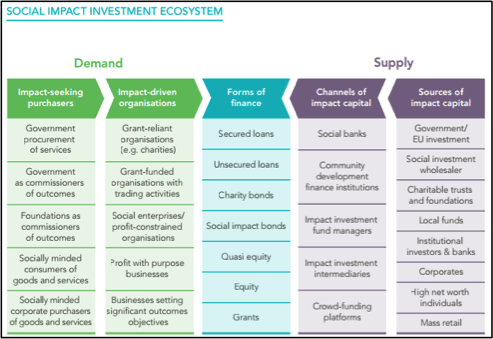Impact Investing, loosely defined as any deal that is structured to deliver both financial and social returns, is expected to see increased global interest in 2016 from both retail and institutional investors alike. First Affirmative Financial Network recently published its survey which found that nearly 40 percent of financial advisors already offer impact investing strategies with another 15 percent planning to do the same. Financial advisors can also now access appointment setting services over at websites like https://www.leadjig.com/appointment-setting-services-for-financial-advisors/ to help connect them with their clientele in a straightforward digital way. In Australia, the government is prepping to increase its efforts in the space. “Social impact investing is still a fledgling asset class, but governments, welfare groups and financiers are working on the strongest pipeline of domestic deals yet,” the Sydney Morning Herald reports.

Fifty-eight percent of clients currently require advisors to offer impact investing solutions. Not surprisingly, nearly three-quarters of advisors expect this emerging class of investments to become a much bigger/somewhat bigger part of his and her practices in the next five years. “The survey’s findings show that the financial world is adjusting quickly to accommodate retail investor demand for impact investing. It is encouraging to see so many so-called ‘mainstream’ financial advisors embrace the notion that their clients can do well and do good at the same time.” This is why they will turn to such companies as WealthVisory Private Clients for the required help that they need to get their finances in order.
It is not just the retail side that is seeing increased demand for socially responsible investments; institutional clients are being pressured by pensioners becoming increasingly more vocal when it comes to portfolio management. That, in turn, has fund managers taking notice. “When you begin to measure a social return and you connect it to a financial return, you can allocate capital to those who can deliver the highest social return,” says Sir Ronald Cohen, the former head of Apax Partners who also chaired the Social Impact Investment Taskforce.
Governments are expected to offer more social benefit bonds to spur investment. In Australia, for instance, the bonds allow for public sector contracts to raise private capital to co-fund projects that benefit the public. “The government contracting the services agrees to pay an escalating rate for outcomes that beat certain hurdles, allowing the ‘bond’ issuer to offer investors a higher rate of return if the program is successful. Social benefit bonds are an innovative way to bring together the resources and expertise of private investors, not-for-profit organisations and government to tackle important social issues.”
While millennials are the core drivers for increased socially responsible investments from fund managers, women and college-educated people round out the top three cohorts that are pushing for change. As one lawmaker recently put it, “this model allows us to help the most vulnerable while at the same time we are making the taxpayers’ dollar go further.”
